My relationship with diamonds:
A love affair that changed my life
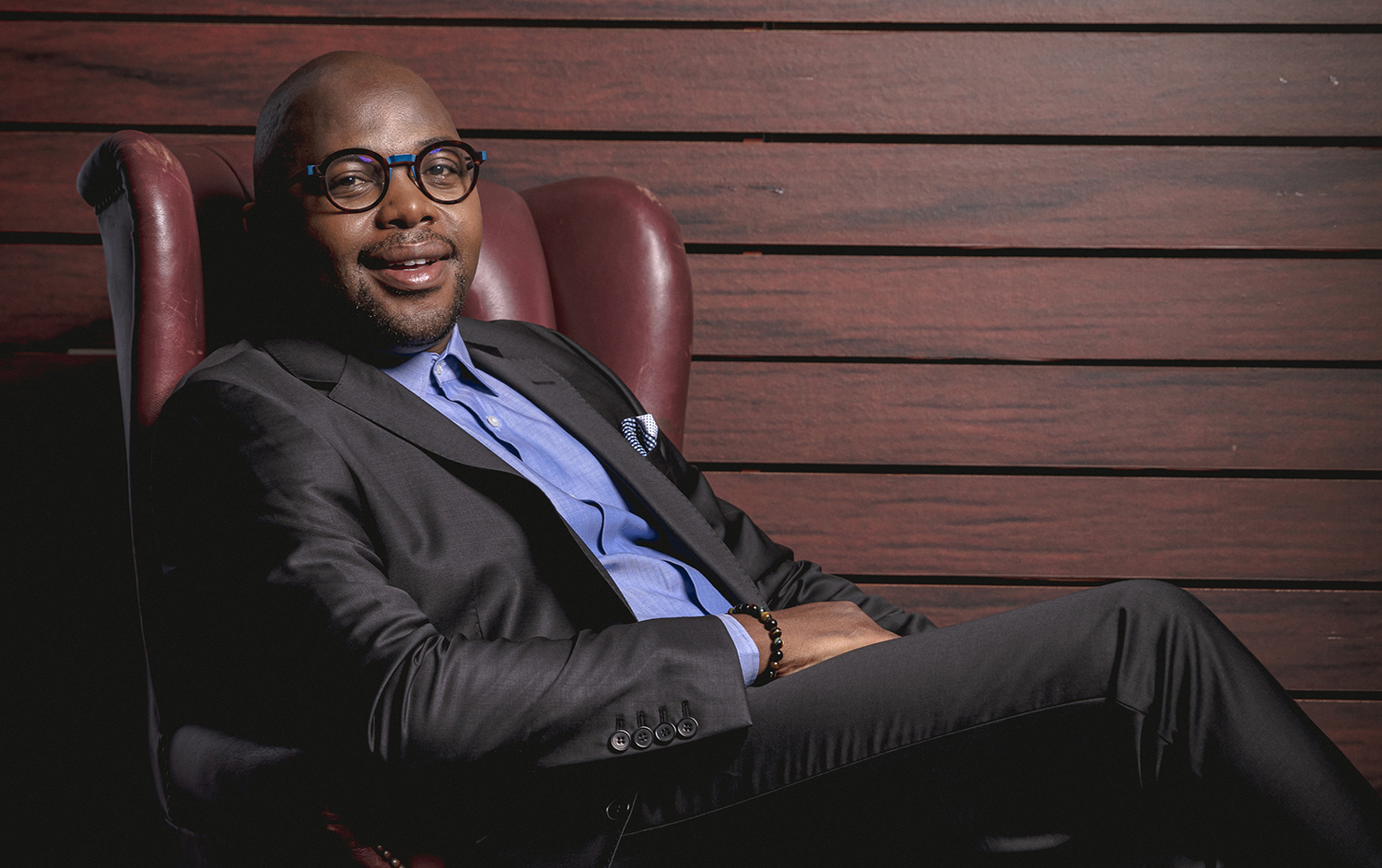
Molefi Letsiki, a Johannesburg-based diamond manufacturer and Chair of the Diamond Dealers Club of South Africa.
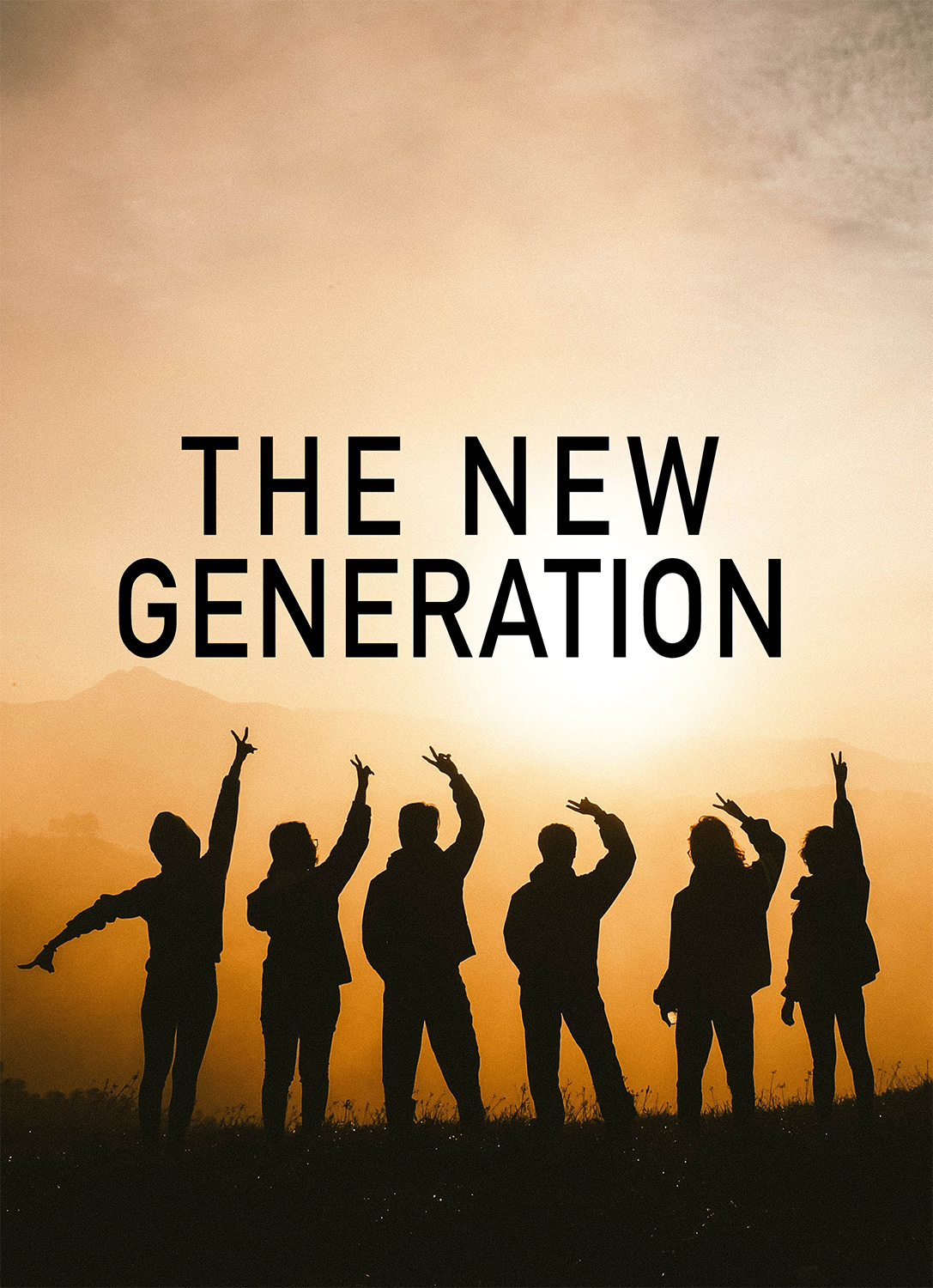
The New Generation is a WDC News Update series that tells the stories of up-and-coming diamond industry leaders, examining the role that they see for themselves, the business and the diamond itself. Each article in the series is delivered in the person’s own voice.
The first article in the series features Molefi Letsiki, a diamond manufacturer in Johannesburg, South Africa, and the current Chair of the Diamond Dealers Club of South Africa.
My Name is Molefi Letsiki, and I am a diamantaire. I make this statement proudly, because just a few decades ago, as a black boy living in South Africa, I could never have said that, nor for a long time could I have even worked as a diamond polisher. That is because it was a profession reserved exclusively for whites, Indians and colored people, which in my country refers to people of mixed racial origin.
I am fortunate to have spent most of my living years in the new South Africa, the country that developed after the end of apartheid rule and the first all-race general election in 1994. During my childhood I experienced apartheid firsthand, however through all my working life I have been part of what we call the Born-Free Generation, which is made up of those South Africans who have lived in a world unshackled by the cruel political system that governed and limited the lives of our parents.
Interestingly, however, I am a second-generation diamantaire. This is because my father was among the first black South Africans to become a polisher.
Today I unashamedly state that I love diamonds. This is not only because of my intimate knowledge of the gemstone, nor the wealth of experience I have built up in cutting and polishing them. It is also because I understand first-hand the potential of our industry to elevate the lives of people who under different circumstances would have a faced a considerably more difficult future.
It was not always that way. In fact, my initial relationship with diamonds was more one of hate. This was the irony of being a black African child whose father polished diamonds and would always talk about them, but all the while I had never actually seen one.
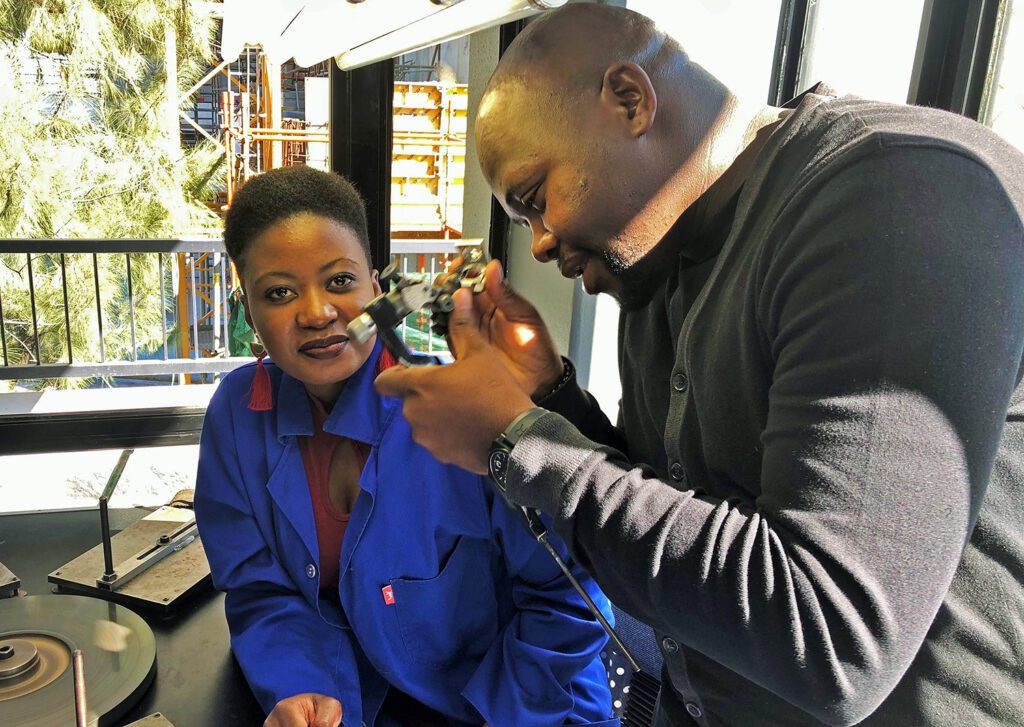
Molefi Letsiki examining a diamond at his polishing plant in Johannesburg.
My first encounter with a real diamond was unintentional. After a long day at school, I often had no choice but to uncomplainingly wait for my father to finish work before we could make our way home. It was on one of those occasions that I actually came face to face with the genuine article, and was immediately captivated by the scintillation that emanated from this piece of carbon set in a polishing tang. It was a sparkle that ignited in me a love that continues to burn to this very day.
Building a business in the new South Africa
My career in the diamond industry began as an apprentice learning how to cut and polish diamonds. I ended up establishing my own diamond manufacturing company back in 2005, calling it Molefi Letsiki Diamonds.
Initially my company employed only one person. Today it employs more than 15 people on a permanent basis.
In developing my company, and more specifically meeting the very fundamental challenge of establishing a reliable supply of rough diamonds, I have been able to make use of programs that were designed to promote the empowerment of previously disadvantaged groups in South Africa.
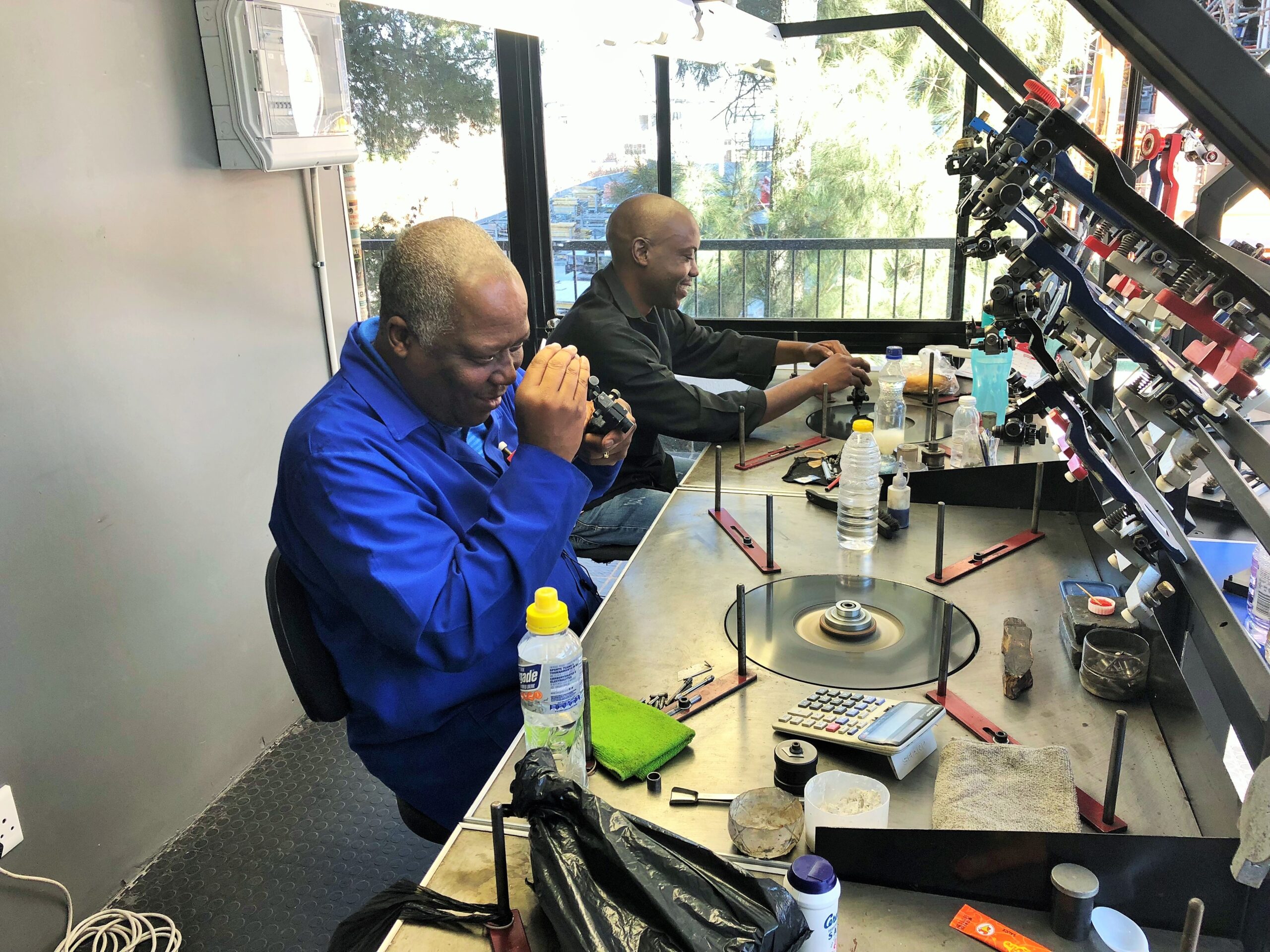
Diamond polishers at the Molefi Letsiki plant in Johannesburg, South Africa.
My journey started with becoming a client of State Diamond Trader, which is an official entity that buys and sells rough diamonds to promote equitable access to them, for the beneficiation of South Africa’s diamond resources. Furthermore, working with other producers such as De Beers have helped us obtain local and international market access and sponsored participation at international trade shows.
I am also a member of the first class of the Enterprise Development Project for Diamond Beneficiators, graduating in 2019. The three-year program was facilitated by De Beers Sightholder Sales South Africa, in partnership with Raizcorp, a business incubation expert. It included formal, curriculum-based learning in parallel with mentorship in business strategy, finance, sales, marketing and personal development.
Each company participating in the Enterprise Development Project for Diamond Beneficiators also received an allocation of rough diamonds from the De Beers Group, in line with its market requirements and capacity. Today I am one of the two companies from that class that are still getting this rough supply, and I am also client of Petra Diamonds, the owner and operator of the famous Cullinan Mine.
Rough supply is an essential part of the success equation, but it is not the only part. When it comes to cutting and polishing, it also requires being able to do those jobs well. Today I can proudly state that that Molefi Letsiki Diamonds is a Forevermark manufacturer, and part of an exclusive club of firms producing African diamonds exquisitely cut and polished by Africans.
One of the inspirations for starting my own company came from wanting to see where the polished diamonds go. Back then what I knew is that we buy rough diamonds, cut and polish them and then sell them to the polished dealer next door. But it always intrigued me where the polished dealer sold those diamonds. I was fascinated to know who the end-users are.
Over the years, from doing research and starting to travel the world more, I learned that major consumers of polished diamonds live in first world countries. I have since worked very hard to ensure that I can penetrate those markets. I do so not only with diamonds, but also by telling the story about the good have they have done for me as the son of a polisher.
But I do not limit myself to my personal journey, but also to the more general perspective of what good diamonds can do for all polishers, and indeed everyone involved in the manufacturing process. This is case when they are ethically, produced, manufactured and handled, from the mine until the point at which they get into the hands of the end-user.
The drive to tell the good that diamonds do meant that I needed to be more involved in industry organizations. This was to ensure that I not only talk about ethics, but also practice them.
Perspectives of industry leadership
I joined the Diamond Dealers Club of South Africa, of which I am the Chairman today. I am also an executive committee member of World Federation of Diamond Bourses (WFDB), to which our bourse belongs. Furthermore, I am the African Coordinator and one of the founding members of Young Diamantaires group, which I joined when it was formed in Dubai in 2016.
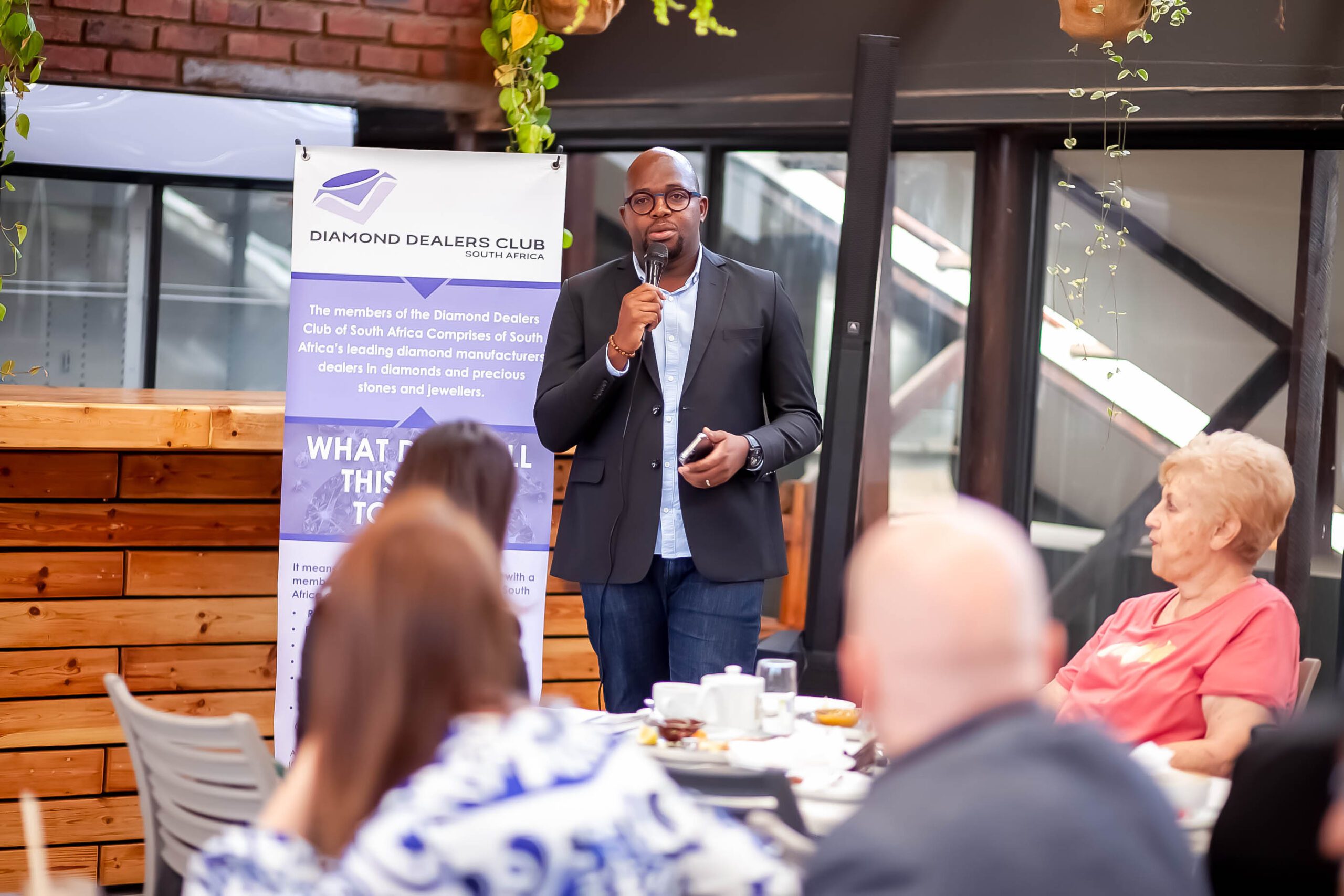
Diamond Dealers Club of South Africa Chair Molefi Letsiki addressing a gathering in Johannesburg.
Closer to home and my own personal history, I am the co-founder and President of the South African Young Diamond Beneficiators’ Guild. Its goal is to increase the percentage of diamonds mined South Africa that also are cut and polished in the country. We believe that, through beneficiation, the diamond industry can be a more effective engine for job creation and employment, and an attractive prospect for emerging entrepreneurs in the country.
When the World Diamond Council launched its revised System of Warranties in 2021, I was proud to be asked to be one of its ambassadors, along with other diamantaires from around the world. We are adding our influence and voices to ensure that ethical business practices are adhered to throughout the chain of distribution.
Being involved with industry organizations, I have come to enjoy opportunities and platforms that allow me to contribute to decisions that affect the future of our industry.
Diamonds should more than just capture us with their physical beauty. They should motivate us as well. We should not polish diamonds simply to be set in jewelry. Our polished diamonds should also inspire jewelers.
That inspiration should be drawn from the inherent beauty of the polished diamond, and also from the story behind it. Inspiration should be sourced from where it has traveled and and from the difference it made in the lives of individuals and communities living in the countries where diamonds are mined. It is a story like my own, one of a young black South African who, once upon a time, had heard of but never seen an actual diamond.






